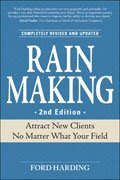 From The Mistake Bank.
From The Mistake Bank.
[This story is from Ray Anderson, Founder and Chairman of Interface, Inc., a manufacturer of carpeting and fabrics.]
When we began [Interface], I made the initial investment personally. And then friends came in, then a much larger partner joined in, and we eventually financed the company. And, by the way, the day we had our finance all in hand is the day we count as the birthday of Interface. Up to then, everything is conception and gestation, beginning with the gleam in my eye, perhaps the idea; but it’s only when you have your money in hand that you can truly call yourself a company. And that’s the birthday.
Interface, after getting through that treacherous startup, in the teeth of the worst recession since 1929, really hit a home run year after year, 70 percent compound growth. And then ten years later we went public, and for the first time had access to other people’s money. Investors who bought shares in the stock, our expanded capital base of Interface, enabled us to begin to make acquisitions, and we made acquisitions in Canada, in Northern Ireland, and eventually in the United Kingdom and in Holland. And then in 1998, when the company was fifteen years old, we were a global company. Then we made other acquisitions, made subsequent stock offerings to the public, and had people subscribe to the stock and further expand the capital base, which enabled us to do more. We leveraged other people’s money time and again over the years, so much so that it got to be a little too easy to access it.
And then we made a concentrated series of acquisitions to create a downstream distribution system. We made twenty-nine acquisitions, over a very short period of time, of contract dealers, the people who install and maintain their products. We wanted a captive, owned distribution system, and we invested $150 million of other people’s money, basically by selling stock and doing bond offerings. And it was too easy.
If we’d been spending our own money, we would have thought very hard about those acquisitions. In the long run, they turned out to be a mistake, and six, seven years later we began to dismantle this distribution system and liquidate it, selling the businesses back to the owners or back to the employees. And we might not ever have undertaken that unfortunate series of investments if we’d been investing our own money. We would have questioned it.
Reprinted by permission of Harvard Business Press. Excerpted from Lessons Learned: Straight Talk from the World’s Top Business Leaders--Starting a Business. Copyright (c) 2008 Fifty Lessons Limited; All Rights Reserved.
For more information about the "Lessons Learned" series, including a showcase of 50 Lessons video stories, please follow this link.
acquisitions, narrative, capital, financing, startup, entrepreneurism, reading list, Mistake Bank

 rain-mak-er n. a person (as a partner in a law firm) who brings in new business.
rain-mak-er n. a person (as a partner in a law firm) who brings in new business.














